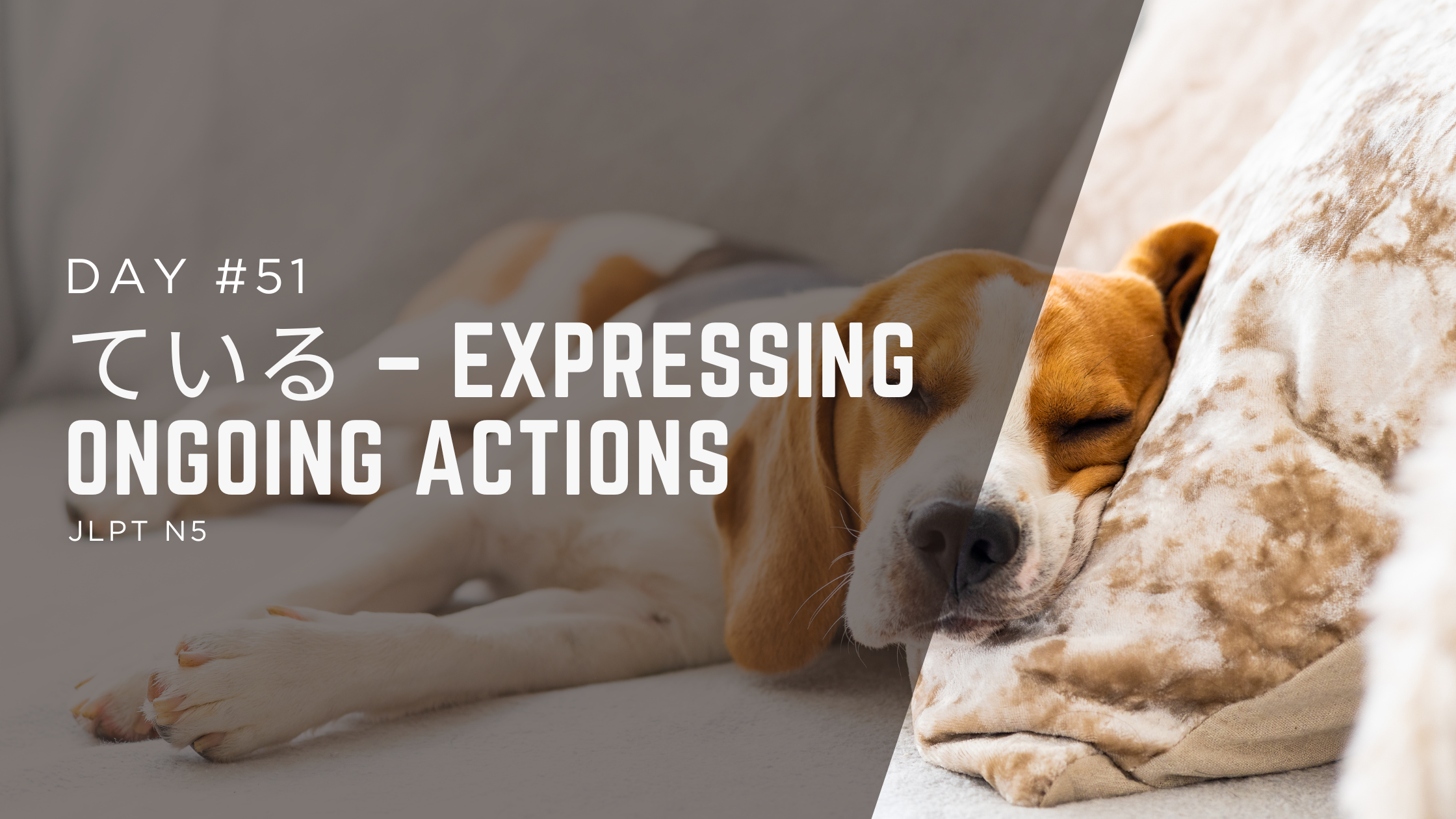Congratulations on reaching Day 51 of your 100-day journey to JLPT N5 fluency!
We’re tackling ている, a grammar point that shows actions happening right now or ongoing states—think “I’m eating” or “The children are playing.”
This is your key to describing what’s happening around you, making conversations more dynamic and real. By mastering ている, you’ll move closer to natural Japanese chats and ace your JLPT N5. Let’s dive in and make every moment count!
Main Lesson: Understanding ている
Grammar Rules
Meaning:
ている shows a verb’s progressive tense, indicating something is currently happening (e.g., “I’m walking”) or an ongoing state (e.g., “It’s raining”). It can also describe a result that continues (e.g., “The door is open”).
Structure:
Take the stem of a verb (remove ます) + ています (polite) or ている (casual).
Example:
あるく (walk) → あるいています (I’m walking).
Common in daily life for describing what’s happening now or habits.
Key Notes:
- Verbs like “あるく”, change to いて (e.g., あるいています).
- Verbs like “たべる”, change to て (e.g., たべています).
- Verbs like “のむ”, change to んで (e.g., のんでいます).
- Verbs like “しる”, change to って (e.g., しっています).
Avoid with instant verbs (e.g., しぬ) unless describing a state.
Use います for politeness in conversations or JLPT N5 tests.
This grammar transforms your learn Japanese for beginners experience, letting you talk about the present with confidence.
Vocabulary List:
Verbs:
| Words | Masu Form | Teiru Form | English |
|---|---|---|---|
| たべる | たべます | たべている | eat |
| のむ | のみます | のんでいる | drink |
| ねる | ねます | ねている | sleep |
| よむ | よみます | よんでいる | read |
| かく | かきます | かいている | write |
Nouns:
| Words | Romaji | English |
|---|---|---|
| りんご | ringo | apple |
| みず | mizu | water |
| ほん | hon | book |
| ペン | pen | pen |
| ベッド | beddo | bed |
Adjectives:
| Words | Romaji | English |
|---|---|---|
| あたたかい | atatakai | warm |
| つめたい | tsumetai | cold (to touch) |
| しずか | shizuka | quiet |
| わるい | warui | bad |
Example Sentences
These examples reflect how native Japanese speakers naturally use ている in everyday scenarios.
いま、りんご を たべています。
Ima, ringo o tabete imasu.
– I’m eating an apple now.
ねこ が みず を のんで います。
Neko ga mizu o nonde imasu.
– The cat is drinking water.
ほん を よんで います か?
Hon o yonde imasu ka?
– Are you reading a book?
ペン で え を かいて います。
Pen de e o kaite imasu.
– I’m writing a picture with a pen.
いぬ は どこで ねています か?
Inu wa doko de nete imasu ka?
– Where is the dog sleeping?
こども が こうえん で あそんで います。
Kodomo ga kouen de asonde imasu.
– The children are playing in the park.
わたし は いちねんかん にほんご を べんきょう して います。
Watashi wa ichinenkan nihongo o benkyou shite imasu.
– I’ve been studying Japanese for a year.
かれ は おもしろい ほん を よんで います。
Kare wa omoshiroi hon o yonde imasu.
– He is reading an interesting book.
Practice swapping verbs and nouns to create your own!
Conclusion
Amazing work on Day 51! You’ve mastered ている, expressing ongoing actions like “I’m eating an apple” or “The children are playing” for natural chats or JLPT N5 success. With clear rules, fresh vocab, and real-life examples, you’re building fluency step by step.
Try a ている sentence — let’s practice いっしょに! がんばって!



